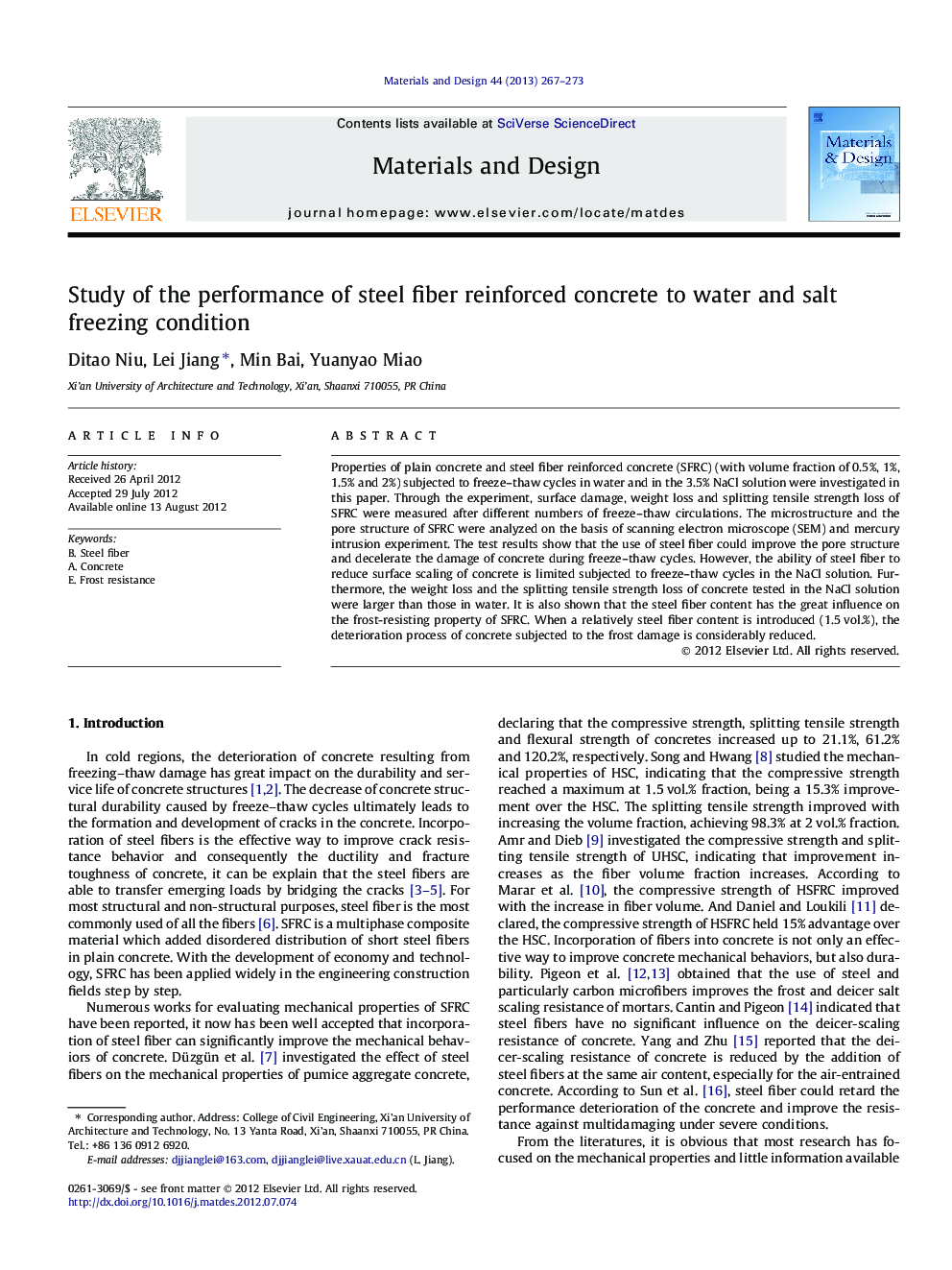| Article ID | Journal | Published Year | Pages | File Type |
|---|---|---|---|---|
| 830332 | Materials & Design (1980-2015) | 2013 | 7 Pages |
Properties of plain concrete and steel fiber reinforced concrete (SFRC) (with volume fraction of 0.5%, 1%, 1.5% and 2%) subjected to freeze–thaw cycles in water and in the 3.5% NaCl solution were investigated in this paper. Through the experiment, surface damage, weight loss and splitting tensile strength loss of SFRC were measured after different numbers of freeze–thaw circulations. The microstructure and the pore structure of SFRC were analyzed on the basis of scanning electron microscope (SEM) and mercury intrusion experiment. The test results show that the use of steel fiber could improve the pore structure and decelerate the damage of concrete during freeze–thaw cycles. However, the ability of steel fiber to reduce surface scaling of concrete is limited subjected to freeze–thaw cycles in the NaCl solution. Furthermore, the weight loss and the splitting tensile strength loss of concrete tested in the NaCl solution were larger than those in water. It is also shown that the steel fiber content has the great influence on the frost-resisting property of SFRC. When a relatively steel fiber content is introduced (1.5 vol.%), the deterioration process of concrete subjected to the frost damage is considerably reduced.
► Based on the fast freeze–thaw test, the frost resistance of SFRC has been studied. ► Different volumes of steel fiber have been selected to prepare the concrete. ► The microstructure of SFRC subjected to freeze–thaw cycles has been analyzed. ► The influence of steel fiber volume on the frost-resisting property is obvious. ► Steel fiber can be used to improve the frost-resisting property of concrete.
